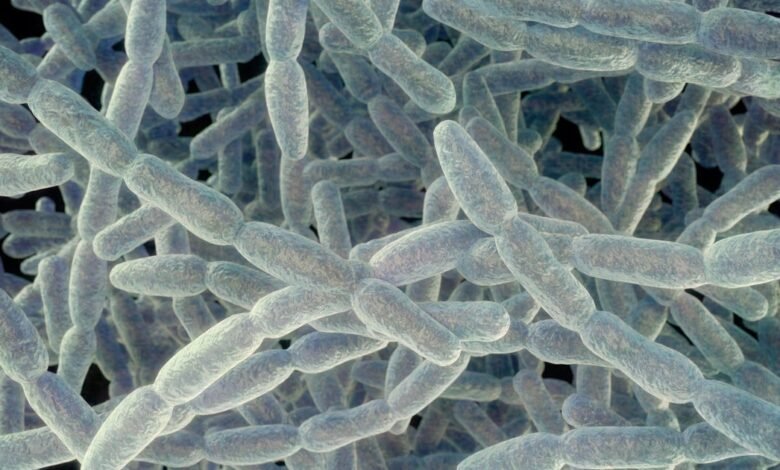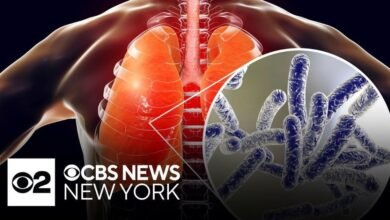NYC Officials Confirm Shocking Outbreak of Legionnaires’ Disease in Bronx High-Rise!

Understanding Legionnaires’ Disease: An Urgent Public Health Concern in the Bronx
Legionnaires’ disease is a severe form of pneumonia caused by the Legionella bacteria, which often thrive in warm water environments. Recently, New York City health officials reported cases of this potentially life-threatening illness linked to an apartment building in the Bronx, marking yet another incident that highlights the need for heightened awareness and preventive actions regarding this disease. This blog post delves into the intricacies of Legionnaires’ disease, the recent outbreak in the Bronx, and the necessary precautions that individuals, property owners, and public health officials must take to mitigate risks.
What is Legionnaires’ Disease?
Legionnaires’ disease is a severe bacterial infection that primarily affects the lungs. It is named after an outbreak that occurred at a convention of the American Legion in 1976 in Philadelphia, where many attendees became ill. More often than not, the bacteria is found in water systems, including large plumbing systems, hot tubs, cooling towers, and even decorative fountains. Transmission occurs when people inhale aerosolized water droplets containing the bacteria, typically small enough to be particulate matter in the air. It’s essential to differentiate this disease from its milder counterpart, Pontiac fever, which can also be caused by the same bacteria but generally results in flu-like symptoms.
Recent Outbreak in the Bronx
In light of recent events, health officials in New York City have reported several cases of Legionnaires’ disease originating from a residential apartment complex in the Bronx. The identification of these cases raises significant concerns, particularly in densely populated urban settings where buildings often share water systems and infrastructure. As authorities investigate the outbreak, they are working diligently to ascertain the exact source of the bacteria within the building’s plumbing systems or other water resources. The rapid response reflects the urgency of addressing public health matters that can escalate quickly if left unattended.
Identifying Symptoms and Seeking Treatment
The symptoms associated with Legionnaires’ disease usually manifest within 2 to 14 days following exposure to the bacteria. Common symptoms may include:
- High fever (sometimes exceeding 104°F)
- Coughing that may produce mucus or blood
- Shortness of breath
- Muscle aches and fatigue
- Headaches
- Gastrointestinal symptoms like diarrhea or nausea
Due to the acute nature of the disease, prompt diagnosis and treatment are crucial. If you exhibit symptoms consistent with those listed above, especially in the wake of a reported outbreak, it’s vital to consult a healthcare provider immediately. Early intervention can significantly increase recovery chances, as the disease is typically treated with antibiotics.
Preventive Measures to Combat Legionnaires’ Disease
Preventing the spread of Legionnaires’ disease involves various techniques that can be implemented in residential and commercial properties. Here are some essential steps homeowners, landlords, and managers can take:
1. Regular Cleaning and Maintenance
Residential and commercial buildings should undertake regular cleaning and maintenance of water systems, including cooling towers, hot tubs, and decorative fountains. Regular assessments can help identify and mitigate areas conducive to bacterial growth.
2. Temperature Control
Legionella bacteria thrive in warm water, typically developing at temperatures between 77°F and 113°F. By maintaining water heating systems at 140°F and ensuring that water distribution is sufficiently cooled, the risk of Legionella proliferation can be significantly reduced.
3. Water Testing
Proactive testing of water systems for the presence of Legionella bacteria can help identify issues before they lead to outbreaks. This includes both routine checks and assessments following reported cases within a community.
4. Risk Management Plans
Building owners should develop risk management plans that specifically address Legionnaires’ disease. These plans should consider the building’s water systems, maintenance schedules, and emergency response protocols.
5. Resident Education
Educating residents regarding the risks of Legionnaires’ disease is critical. Inform them about symptoms, how the disease spreads, and the importance of promptly reporting any concerns. Clear communication fosters a more proactive approach among communities.
The Role of New York City Health Officials
New York City health officials play a vital role in controlling and preventing Legionnaires’ disease outbreaks. In collaboration with building owners, they conduct investigations and implement community education on risk factors and health precautions. The city’s response to the recent outbreak in the Bronx demonstrates the importance of swift action in identifying potential sources and deploying containment measures when necessary. Their commitment to public health welfare underscores the need for ongoing vigilance and collaboration between residents, property owners, and health authorities.
Conclusion
Legionnaires’ disease presents a serious public health threat that requires collective awareness and responsibility. Recent reports from the Bronx serve as a stark reminder of the potential risks posed by bacterial diseases lurking within our built environments. Public health officials, property owners, and residents must work together to ensure that effective measures are in place to prevent outbreaks and protect community health. By implementing preventive strategies, promoting education, and staying vigilant, we can combat this disease and safeguard our communities.
Summary
- Legionnaires’ disease is a severe form of pneumonia caused by Legionella bacteria found in water systems.
- Recent cases have emerged in a Bronx apartment building, prompting health officials to investigate the outbreak.
- Symptoms typically appear 2 to 14 days after exposure and can include high fever, coughing, and shortness of breath.
- Preventive measures include regular cleaning of water systems, temperature control, water testing, and resident education.
- New York City health officials play a critical role in managing these outbreaks and promoting public health awareness.





